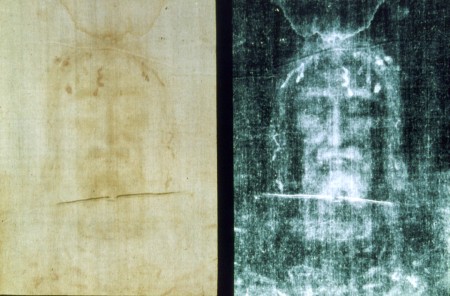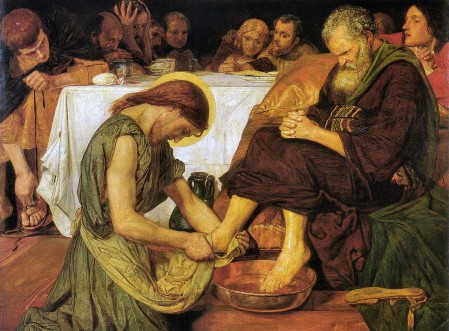We ask you, urgently: don’t scroll past this
Dear readers, Catholic Online was de-platformed by Shopify for our pro-life beliefs. They shut down our Catholic Online, Catholic Online School, Prayer Candles, and Catholic Online Learning Resources—essential faith tools serving over 1.4 million students and millions of families worldwide. Our founders, now in their 70's, just gave their entire life savings to protect this mission. But fewer than 2% of readers donate. If everyone gave just $5, the cost of a coffee, we could rebuild stronger and keep Catholic education free for all. Stand with us in faith. Thank you.Help Now >
Shroud of Turin: New X-Ray Analysis Reignites Debate on the Burial Cloth of Jesus
FREE Catholic Classes
The Shroud of Turin, a controversial linen cloth believed by some to be the burial shroud of Jesus, has mystified the world for centuries. First displayed in the 1350s, it was hailed as the actual cloth that wrapped Christ's body after his crucifixion. The shroud, also known as the Holy Shroud, features a faint image of a bearded man, which many believers claim is a miraculous imprint of Jesus' body on the fabric.

Photo Credit: Wikimedia Commons
Highlights
8/20/2024 (3 months ago)
Published in Living Faith
Keywords: Shroud of Turin, Jesus Christ, Burial Cloth, Jesus Burial
In the 1980s, however, research seemed to debunk the shroud's authenticity, dating it to the Middle Ages - several centuries after Jesus' death. This carbon dating analysis, conducted by an international team in 1988, indicated that the linen was likely manufactured between 1260 and 1390 AD.
The method used, which measures the decay of a radioactive isotope of carbon (14C), appeared to place the shroud far from the time of Christ.
Despite this, recent research has reopened the debate. Italian scientists from the Institute of Crystallography of the National Research Council used a new technique involving wide-angle X-ray scattering (WAXS) to date the shroud. This method examines the natural aging of flax cellulose, converting it into a timeline.
By studying small samples of the shroud's fabric, the researchers found that the linen's structure and cellulose patterns suggested it was likely created around 2,000 years ago, aligning it with the era of Jesus.
Their findings showed that the shroud had been kept at relatively stable conditions - around 72.5 degrees Fahrenheit with 55 percent humidity - for about 13 centuries before arriving in Europe. When the team compared the shroud's cellulose breakdown to other linens from Israel dating back to the first century, they found striking similarities. These results contrast with the 1988 carbon dating, which the researchers now argue may have been flawed due to contamination of the samples.
Further supporting their claims, the team noted that the shroud's data profiles matched those of a linen sample from Masada, Israel, dated between 55 and 74 AD. None of the samples from the Middle Ages showed any compatibility with the shroud's structure. Lead researcher Dr. Liberato De Caro suggested that the carbon-14 dating in 1988 might have been unreliable due to improper cleaning of the samples, which could have introduced contaminants.
Over the years, the Shroud of Turin has been the subject of extensive study, with more than 170 peer-reviewed academic papers published since the 1980s. Despite numerous tests, including those that attempted to determine if the image was painted, scorched, or otherwise fabricated, no definitive conclusions have been reached. In 2017, another group of researchers claimed to have found evidence that the shroud bore the blood of a torture victim, further challenging the notion that it was a medieval forgery.
The Shroud of Turin remains preserved in the royal chapel of the Cathedral of San Giovanni Battista in Turin, Italy, where it continues to captivate believers, skeptics, and scholars alike.
Join the Movement
When you sign up below, you don't just join an email list - you're joining an entire movement for Free world class Catholic education.
-

-
Mysteries of the Rosary
-
St. Faustina Kowalska
-
Litany of the Blessed Virgin Mary
-
Saint of the Day for Wednesday, Oct 4th, 2023
-
Popular Saints
-
St. Francis of Assisi
-
Bible
-
Female / Women Saints
-
7 Morning Prayers you need to get your day started with God
-
Litany of the Blessed Virgin Mary
Daily Catholic
 Daily Readings for Saturday, November 23, 2024
Daily Readings for Saturday, November 23, 2024 Bl. Miguel Pro: Saint of the Day for Saturday, November 23, 2024
Bl. Miguel Pro: Saint of the Day for Saturday, November 23, 2024 Prayer of an Expectant Mother: Prayer of the Day for Saturday, November 23, 2024
Prayer of an Expectant Mother: Prayer of the Day for Saturday, November 23, 2024- Daily Readings for Friday, November 22, 2024
- St. Cecilia: Saint of the Day for Friday, November 22, 2024
- St. Gertrude's Guardian Angel Prayer: Prayer of the Day for Friday, November 22, 2024
![]()
Copyright 2024 Catholic Online. All materials contained on this site, whether written, audible or visual are the exclusive property of Catholic Online and are protected under U.S. and International copyright laws, © Copyright 2024 Catholic Online. Any unauthorized use, without prior written consent of Catholic Online is strictly forbidden and prohibited.
Catholic Online is a Project of Your Catholic Voice Foundation, a Not-for-Profit Corporation. Your Catholic Voice Foundation has been granted a recognition of tax exemption under Section 501(c)(3) of the Internal Revenue Code. Federal Tax Identification Number: 81-0596847. Your gift is tax-deductible as allowed by law.





 Daily Readings for Saturday, November 23, 2024
Daily Readings for Saturday, November 23, 2024 Bl. Miguel Pro: Saint of the Day for Saturday, November 23, 2024
Bl. Miguel Pro: Saint of the Day for Saturday, November 23, 2024 Prayer of an Expectant Mother: Prayer of the Day for Saturday, November 23, 2024
Prayer of an Expectant Mother: Prayer of the Day for Saturday, November 23, 2024


